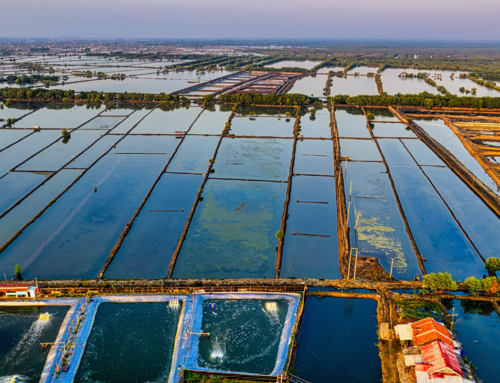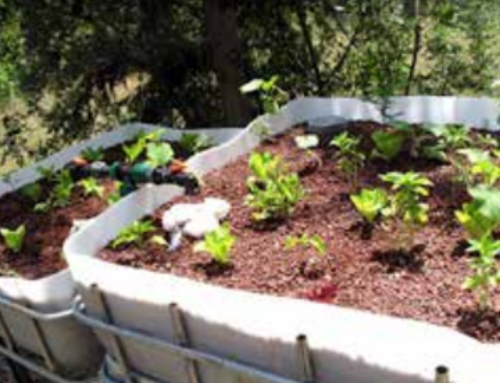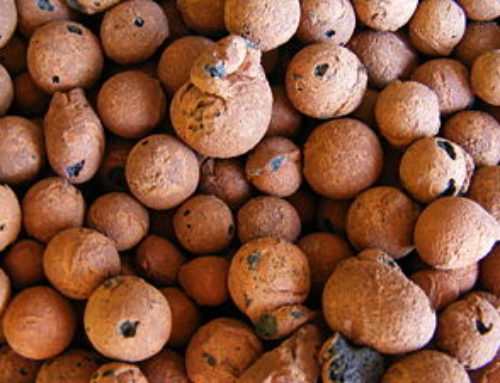Aquaponic systems are recirculating aquaculture systems that incorporate the production of plants without soil. Recirculating systems are designed to raise large quantities of fish in relatively small volumes of water by treating the water to remove toxic waste products and then reusing it.
System design
The design of aquaponic systems closely mirrors that of recirculating systems in general, with the addition of a hydroponic component and some mechanical filters for removing solids.
Fine solids and dissolved organic matter generally do not reach levels that require foam fractionation if aquaponic systems have the recommended design ratio.
The essential elements of an aquaponic system are the fish-rearing tank, a settleable and suspended solids removal component, a biofilter, a hydroponic component, and a sump.
1- Fish-rearing tank.
Standard fish farming practice, primarily feeding the fish.
2- Filtration
Effluent from the fish-rearing tank is treated first to reduce organic matter in the form of settleable and suspended solids. Next, the culture water is treated to remove ammonia and nitrate in a biofilter.
3- Hydroponic
Then, water flows through the hydroponic unit where some dissolved nutrients are taken up by plants and additional ammonia and nitrite are removed by bacteria growing on the sides of the tank and the underside of the polystyrene sheets.
4- Sump
Finally, water collects in a reservoir (sump) and is returned to the rearing tank. The location of the sump varies subject to the overall layout of the system.
- Rearing fish tank
- First Clarifier tank, solids removal
- Second filter tank, biofilter
- Hydroponic
- Sumps
 Optimum arrangement of aquaponic system components (not to scale).
Optimum arrangement of aquaponic system components (not to scale).
Combining biofiltration with hydroponics is a desirable goal because eliminating the expense of a separate biofilter is one of the main advantages of aquaponics.
Crop selection
Many types of vegetables have been grown in aquaponic systems. However, the goal is to culture a vegetable that will generate the highest level of income per unit area per unit time. With this criterion, culinary herbs are the best choice. They grow very rapidly and command high market prices.
Plant Nutrient dynamics
 Dissolved nutrients are measured collectively as total dissolved solids (TDS), expressed as ppm, or as the capacity of the nutrient solution to conduct an electrical current (EC), expressed as millimhos/cm (mmho/cm). A concern with aquaponic systems is nutrient accumulation. High feeding rates, low water exchange and insufficient plant growing areas can lead to the rapid build-up of dissolved nutrients to potentially phytotoxic levels.
Dissolved nutrients are measured collectively as total dissolved solids (TDS), expressed as ppm, or as the capacity of the nutrient solution to conduct an electrical current (EC), expressed as millimhos/cm (mmho/cm). A concern with aquaponic systems is nutrient accumulation. High feeding rates, low water exchange and insufficient plant growing areas can lead to the rapid build-up of dissolved nutrients to potentially phytotoxic levels.
Carp Fish
Carp fish farming is very profitable and as being a land of river. Most farms are farmed in traditional methods. As the population is growing at a high rate so, now it is very difficult to find fish from natural lake or river. So scientific fish farming or use of technology in fish farming is a must to fulfil our protein demand according to population growth. One of this technology is ‘mixed carp fish farming.
Rainbow Trout
 The rainbow trout is a hardy fish that is easy to spawn, fast growing, tolerant of a wide range of environments and handling, and the large fry can be easily weaned on to an artificial diet (usually feeding on zooplankton). Capable of occupying many different habitats, ranging from an anadromous life history [strain known as steelhead] (living in the ocean but spawning in gravel-bottomed, fast-flowing, well-oxygenated rivers and streams) to permanently inhabiting lakes.
The rainbow trout is a hardy fish that is easy to spawn, fast growing, tolerant of a wide range of environments and handling, and the large fry can be easily weaned on to an artificial diet (usually feeding on zooplankton). Capable of occupying many different habitats, ranging from an anadromous life history [strain known as steelhead] (living in the ocean but spawning in gravel-bottomed, fast-flowing, well-oxygenated rivers and streams) to permanently inhabiting lakes.




